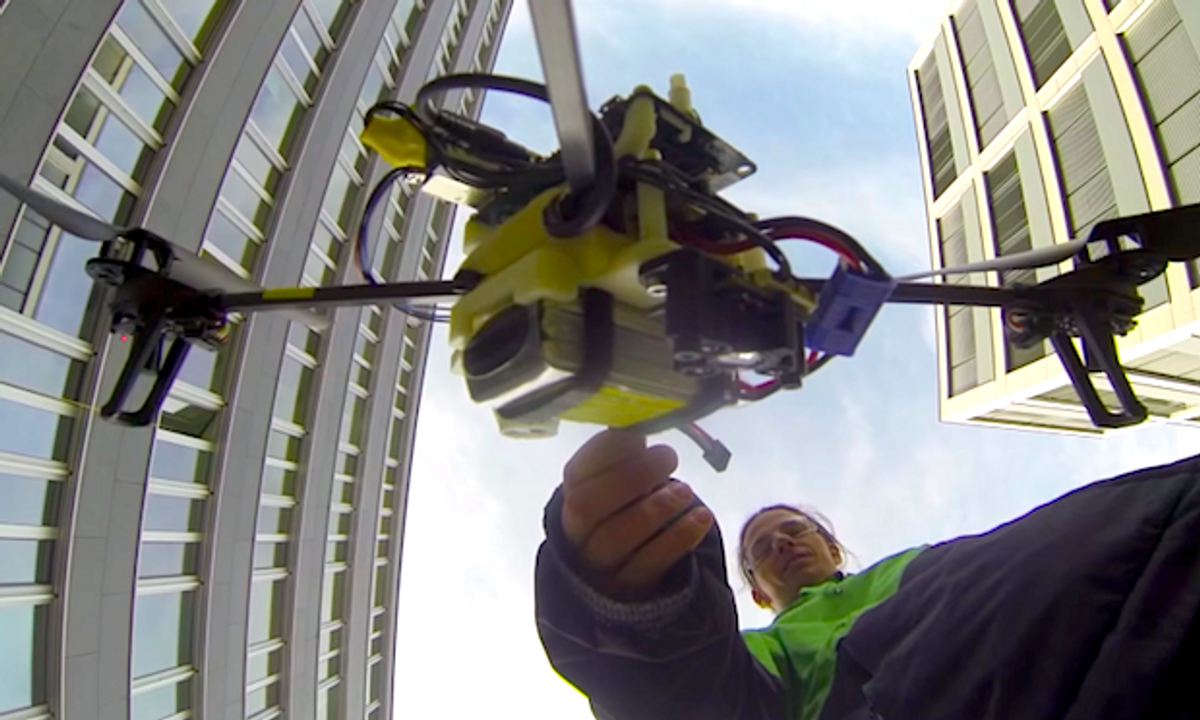I’ll bet you thought that launching a drone by placing it on a level surface, standing back, and commanding it to take off was about as easy as it got, right? Wrong. Forget about level surfaces, forget about standing back, and just pick up your quadrotor and throw it. It’ll be fine!
The great thing about this is that it doesn’t require GPS or infrared tracking or motion capture or any other localization system. All you need is a smartphone-type processor, an IMU (gyro and accelerometer), a small downward-looking monochrome camera, and an infrared time-of-flight range sensor. Lots of other drones stabilize themselves using downward-looking cameras, but that only works if the robot can see the ground unblurrily enough to extract features from the image (and good luck trying to do that right after you’ve been tossed into the air).
What’s unique about this approach—developed by University of Zurich researchers led by Davide Scaramuzza—is that it takes place in several different stages, with the first one being autonomous state estimation from the onboard sensors, followed by the controller guiding the quadrotor towards a stable hover. Once the quadrotor is horizontal, it stabilizes its altitude, and then it can start using its camera to look for features beneath it to lock into a stationary position. Of course, it has to do all of that very fast.
Throwing a quadrotor to demonstrate this technology is a very compelling demo, but it’s not really what this research is all about: it’s much more general, and therefore much more useful. The goal here (and it seems like they succeeded) is to be able to “automatically recover and stabilize a quadrotor from any initial condition.” In robotics, being able to say “any” in that context is a very notable thing, although I have a sneaking suspicion that what they really mean is “any within reason,” because otherwise I’d try just chucking that quadrotor at the nearest tree as hard as I possibly could. Take that, algorithms!
Putting the whims of abusive journalists aside, this research will come in particularly handy when managing the navigation failures that are sure to occur as quadrotors start exploring the world autonomously in commercial contexts. Loss of GPS signals, interference from all sorts of things, and random sensing or computing freakouts are inevitable, and we need ways of managing failures besides just equipping all pedestrians with protective Kevlar umbrellas.
“Automatic Re-Initialization and Failure Recovery for Aggressive Flight with a Monocular Vision-Based Quadrotor,” by M. Faessler, F. Fontana, C. Forster, and D. Scaramuzza, will be presented next month at ICRA 2015 in Seattle. You can read a preprint of the paper here.
[ Robotics and Perception Group ]
Thanks Davide!
Evan Ackerman is a senior editor at IEEE Spectrum. Since 2007, he has written over 6,000 articles on robotics and technology. He has a degree in Martian geology and is excellent at playing bagpipes.



